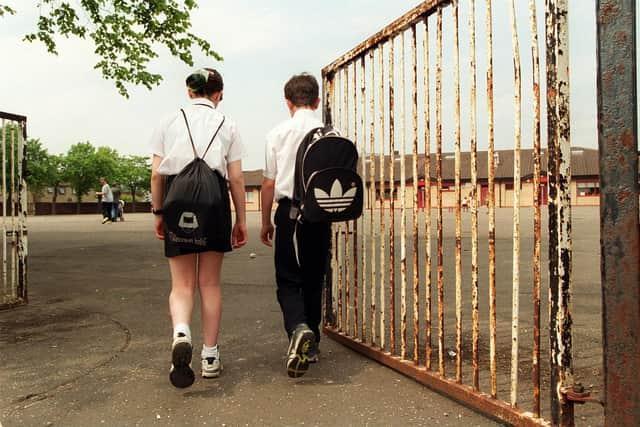Advice now available for Falkirk pupils' safe return to schools
and live on Freeview channel 276
The advice from the COVID-19 Advisory Sub-Group on Education and Children’s Issues, which went live today, states no physical distancing is required between children and young people in primary and secondary schools or on school buses.
For pupils using public transport, the advice recommends that guidance from the Scottish Government and Transport Scotland should continue to apply.
Advertisement
Hide AdAdvertisement
Hide AdJohn Swinney, Scottish education secretary, said: “This scientific advice will inform the way schools can re-open safely from August 11, if infection rates continue to remain low.


“The Education Recovery Group which comprises local authorities, parent representatives and teachers’ organisations and trades unions, has been developing plans for how to open schools safely for everyone.
“We are considering this advice as we develop comprehensive guidance which will give confidence to our school communities that the safety and well being of children, young people and staff is ensured as we welcome them back.
““Ensuring the highest quality education for our young people, in a safe environment, must be a priority for us all and I know that everyone is committed to make sure that children's education is not adversely affected in the longer term.”
Advertisement
Hide AdAdvertisement
Hide AdAccording to the advice, there should be “an increased emphasis on hand hygiene and surface cleaning” with hand washing and/or sanitising required for everyone on every entry to the school.
A zero tolerance – or as close as possible to zero tolerance – approach to symptoms should be in place, with strict compliance to the Test and Protect system.
It is also advised, in both primary and secondary settings, the preference should be to avoid large gatherings and crowded spaces and, as much as possible, to keep pupils within the same groups for the duration of the school day.
Sharing of equipment, like utensils, toys and books, should be kept to a minimum and pupils should be kept in smaller groups with more outdoor activities put in place.
Movement between schools – of children and of temporary/ supply/peripatetic staff – should be kept to an absolute minimum.
Visit www.gov.scot to view the full publication.